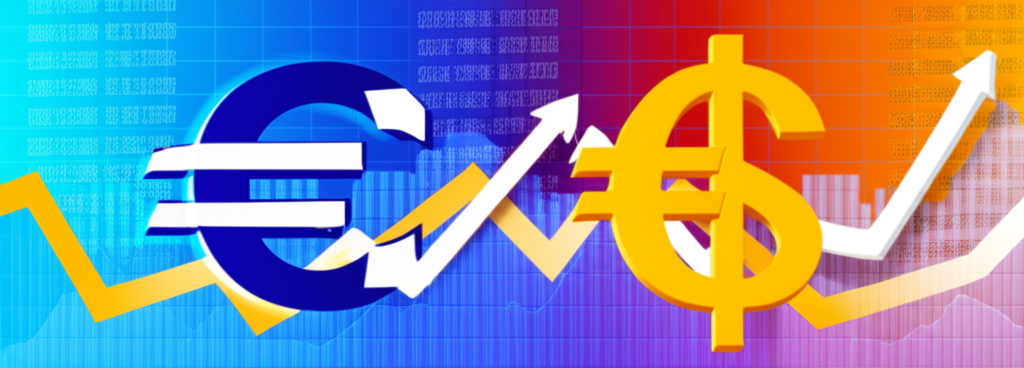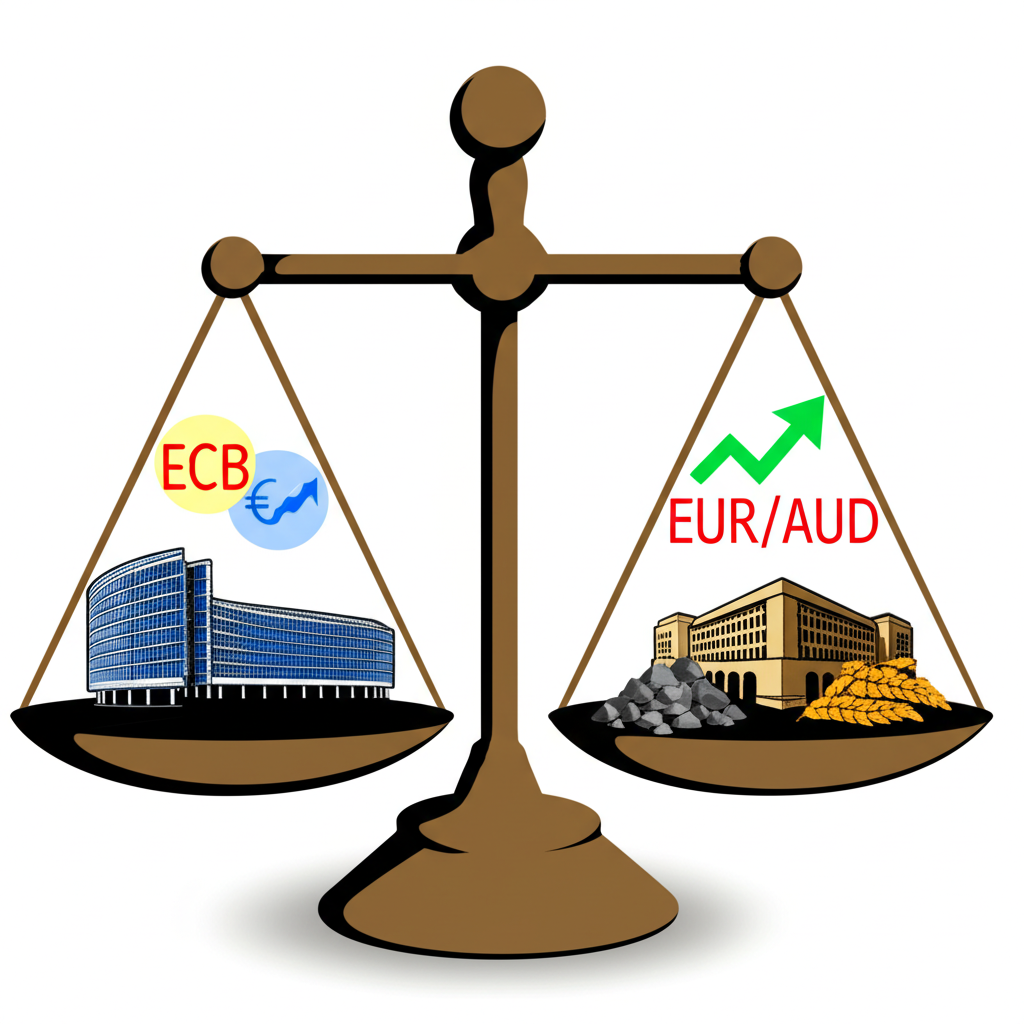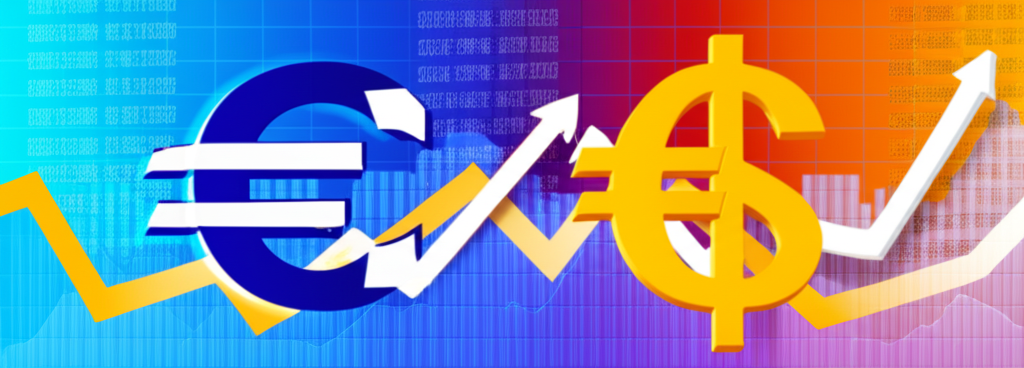Introduction: Understanding the Pulse of EUR/AUD News
The EUR/AUD currency pair stands as a key barometer of the interplay between two vastly different economies—the Eurozone and Australia—each shaped by unique economic structures, policy frameworks, and global market dynamics. Representing the value of one Euro against the Australian Dollar, this cross-currency pair attracts traders seeking exposure to shifts in monetary policy divergence, commodity market trends, and global risk appetite. Unlike major pairs tied closely to the US Dollar, EUR/AUD offers a more nuanced trading landscape, driven less by direct USD influence and more by the relative strength of two distinct macroeconomic narratives. To navigate this pair effectively, traders must go beyond surface-level news updates and develop a strategic understanding of how fundamental developments translate into price action.

Market movements in EUR/AUD are rarely the result of isolated events. Instead, they emerge from a web of interconnected factors—central bank decisions, economic data releases, geopolitical developments, and investor sentiment. A single inflation report or interest rate decision can trigger sharp volatility, but the longer-term trend depends on sustained shifts in economic momentum and policy direction. This article provides a comprehensive framework for interpreting EUR/AUD news, combining fundamental analysis with technical insights and risk-aware strategies, enabling traders to move from passive observers to proactive decision-makers in one of the Forex market’s most revealing cross pairs.
Key Economic Drivers Shaping EUR/AUD
At its core, the EUR/AUD exchange rate reflects the relative economic performance and monetary policy trajectories of the Eurozone and Australia. Traders who monitor both regions closely can anticipate shifts in market sentiment before they fully materialize in price charts. While the pair may appear to move on headlines, the underlying drivers are often rooted in structural economic trends, central bank communication, and external shocks such as commodity price swings or global trade disruptions.

European Central Bank (ECB) Policy & Economic Data
The strength of the Euro is heavily influenced by the European Central Bank’s monetary policy stance and the broader health of the Eurozone economy. As the central bank responsible for price stability across 20 member states, the ECB wields significant influence over capital flows, inflation expectations, and currency valuation.
- Interest Rate Decisions: The ECB’s interest rate announcements are among the most closely watched events in the Forex calendar. When the bank signals a tightening cycle, the Euro typically gains strength as higher yields attract foreign investment. Conversely, rate cuts or prolonged periods of low rates tend to weigh on the currency.
- Quantitative Easing and Tightening: The ECB’s asset purchase programs—used during times of economic stress—inject liquidity into financial markets, often weakening the Euro. The unwinding of these programs, known as quantitative tightening, can have the opposite effect, supporting the currency by signaling confidence in the economic outlook.
- Inflation (CPI) Reports: Inflation data is a primary input for ECB policy decisions. Persistent above-target inflation increases the likelihood of rate hikes, while falling or below-target inflation may lead to a more accommodative stance. The ECB targets a 2% inflation rate over the medium term, and deviations from this goal are closely scrutinized.
- GDP Growth: Quarterly GDP figures provide a clear picture of economic expansion or contraction. Strong growth supports the case for tighter policy, while weak or negative growth can trigger market concerns about deflation and prompt dovish responses.
- Employment Data: Labor market health, reflected in unemployment rates and job creation figures, influences consumer spending and wage growth—both of which feed into inflation and economic resilience. A tight labor market often strengthens the case for monetary tightening.
Traders often turn to the ECB’s official communications—particularly its monetary policy statements and press conferences—for forward guidance. Subtle shifts in language, such as a move from “patient” to “vigilant,” can signal an upcoming policy pivot. These documents, available on the European Central Bank website, are essential reading for anyone trading EUR/AUD with a fundamental edge.
Reserve Bank of Australia (RBA) Policy & Economic Data
The Australian Dollar, often categorized as a commodity-linked currency, reacts strongly to both domestic economic conditions and global market trends. The Reserve Bank of Australia plays a central role in shaping the AUD’s trajectory through its monetary policy decisions and public commentary.
- Cash Rate Decisions: The RBA’s monthly board meetings determine the official cash rate, a benchmark that influences borrowing costs, credit availability, and investment flows. Rate hikes typically boost the AUD by improving yield differentials, while cuts can weaken it.
- Inflation (CPI): Australian inflation data directly impacts the RBA’s policy calculus. With inflation expectations becoming increasingly unanchored in recent years, the bank has shown greater willingness to act decisively to maintain credibility.
- Employment Data: The labor market is a key indicator of economic momentum. Strong employment growth supports consumer confidence and spending, reinforcing the case for tighter policy.
- Retail Sales: As household consumption accounts for a large share of Australia’s GDP, retail sales data offers timely insight into domestic demand trends. Rising sales often correlate with stronger economic performance and potential monetary tightening.
- Commodity Prices: Australia’s economy is heavily reliant on exports of raw materials, particularly iron ore, coal, and natural gas. Fluctuations in global commodity prices directly affect export revenues, trade balance, and national income—factors that bolster or undermine the AUD. For example, rising iron ore prices driven by Chinese infrastructure demand typically strengthen the Australian Dollar.
The RBA’s monetary policy statements and meeting minutes, accessible via the Reserve Bank of Australia’s Monetary Policy Statements page, provide critical insights into the bank’s economic assessment and future policy intentions. These documents often highlight risks to inflation, employment, and financial stability, helping traders anticipate upcoming shifts.

Global Macroeconomic Factors & Geopolitics
Beyond domestic data, EUR/AUD is sensitive to broader global forces that influence risk appetite, capital flows, and currency valuations. These macro-level dynamics often act as catalysts, amplifying or dampening the impact of regional economic news.
- Global Risk Sentiment: The AUD is considered a risk-sensitive currency, meaning it tends to strengthen during periods of global optimism and weaken when markets turn risk-averse. In contrast, the Euro’s safe-haven status is more ambiguous—it can weaken during Eurozone-specific crises but may hold up better during global downturns if the US Dollar strengthens disproportionately.
- Geopolitical Events: Conflicts, trade tensions, or political instability in major economies can disrupt supply chains, affect commodity markets, and alter investor confidence. For instance, tensions in the South China Sea can impact Australia’s trade outlook, while political fragmentation within the EU may undermine the Euro’s credibility.
- Inter-market Correlations: Movements in equity markets, bond yields, and other currency pairs often spill over into EUR/AUD. A sharp drop in global equities may trigger a sell-off in the AUD, while rising US Treasury yields can indirectly affect the Euro through capital reallocation.
Interpreting EUR/AUD News: From Headlines to Actionable Insights
Access to information is no longer a competitive advantage—every trader can read the same headlines. The real edge lies in interpretation: understanding not just what the data says, but what the market expected, how it reacted, and why. This analytical discipline separates informed traders from those who simply react to noise.
Filtering Noise: Identifying High-Impact vs. Low-Impact News
Financial calendars are crowded with data points, but only a handful truly move markets. Traders must learn to distinguish between high-impact catalysts and low-signal updates.
- Consensus vs. Actual Data: Markets price in expectations ahead of releases. A strong jobs report only moves the needle if it beats or misses forecasts. For example, an unemployment rate of 5.1% might seem favorable, but if the market expected 4.9%, the surprise could trigger a sell-off in the currency.
- High-Impact Indicators: Central bank decisions, inflation reports, GDP, and employment figures typically generate the most significant volatility. These are the events that reset market expectations and alter policy paths.
- Low-Impact Chatter: Preliminary data, minor sentiment indices, or backward-looking surveys often have limited influence, especially if they’re subject to revision. While they contribute to the broader narrative, they rarely drive sustained trends on their own.
The Art of News Release Trading: Pre-Release, During, and Post-Release Strategies
Trading around news events is inherently risky but can offer outsized opportunities for those with a disciplined approach. Success depends on timing, risk control, and an understanding of market mechanics during high-volatility windows.
- Pre-Release: Some traders position ahead of key data based on technical setups or sentiment indicators. However, this carries the risk of being caught on the wrong side of a surprise. Others choose to stay flat, avoiding speculation until clarity emerges.
- During Release: The first 30–60 seconds after a data release are often chaotic. Prices can gap, spreads widen dramatically, and slippage becomes common. Algorithmic traders dominate this phase, making it difficult for manual traders to execute cleanly.
- Post-Release: Once the initial reaction subsides, the market begins to digest the implications. This is often the optimal window for discretionary traders to enter, especially if price confirms a breakout or reversal with sustained momentum. Watching for follow-through is key—spikes without volume or continuation often fade quickly.
Regardless of strategy, risk management is paramount. Reducing position size, using wider stop-losses, or waiting for confirmation can help mitigate the dangers of trading during volatile news events.
Beyond the Numbers: Understanding the “Why” Behind Market Reactions
Markets don’t always react logically to data. A strong GDP print might be ignored if inflation is too high, or a weak jobs report could be shrugged off if wage growth is contained. To interpret these nuances, traders must dig deeper.
- Forward Guidance: Central bank language often matters more than the policy decision itself. A rate hold accompanied by hawkish commentary can be bullish, while a hike paired with dovish warnings may disappoint markets.
- Economic Forecasts: Revisions to GDP, inflation, or unemployment projections in central bank reports can signal changing policy trajectories. For example, if the RBA upgrades its growth outlook, it may hint at future tightening.
- Market Sentiment: Sometimes, data is overshadowed by broader trends. A positive Australian jobs report might fail to lift the AUD if global risk sentiment is deteriorating. Understanding the dominant market narrative helps contextualize individual data points.
Technical Analysis & EUR/AUD News: A Synergistic Approach
Fundamental news sets the stage, but technical analysis provides the timing. When combined, the two approaches create a more robust and actionable trading framework, allowing traders to align with the trend while managing risk with precision.
How News Impacts Chart Patterns & Indicators
Major news events can disrupt technical setups, but they can also validate them. Traders who understand this interplay gain a significant advantage.
- Invalidation of Patterns: A well-defined triangle or consolidation pattern may break down instantly on a strong data release, triggering a breakout in either direction. This isn’t a failure of technical analysis—it’s confirmation that new information has shifted market dynamics.
- Initiating New Trends: Significant economic surprises—such as an unexpected rate hike or a sharp inflation miss—can serve as catalysts for new directional moves, often aligning with longer-term fundamentals.
- Spikes, Gaps, and Whipsaws: Price charts frequently show large candles, gaps, or rapid reversals around news. These reflect temporary imbalances in supply and demand, often creating opportunities for contrarian or momentum-based strategies once volatility settles.
Identifying Key Support & Resistance Levels in Volatile News Environments
Technical levels remain relevant even during turbulent periods. They serve as psychological anchors and potential turning points.
- Anchoring Points: Pre-existing support and resistance zones can act as initial targets or barriers, even if they’re eventually breached. A failed breakout from a key level after a news spike may signal exhaustion.
- Entry and Exit: Traders can use these levels to define entries after a pullback, or to place stop-losses beyond confirmed levels to protect against false breaks.
- Confirmation: A close above resistance or below support—especially on strong volume or follow-through—adds credibility to a new trend, increasing the probability of continuation.
Utilizing Sentiment Indicators in Conjunction with News
Market positioning can enhance or contradict news-driven moves. Sentiment tools help traders gauge whether a reaction is overdone or just beginning.
- Commitment of Traders (COT) Reports: These weekly reports from the CFTC show the net positioning of large speculators in currency futures. If the market is already heavily long EUR/AUD and a bullish data release triggers a spike, it could indicate a crowded trade vulnerable to a reversal.
- Retail Sentiment: Some brokers publish data on client positioning. Extremely bullish retail sentiment, for instance, can act as a contrarian indicator, especially if fundamentals don’t support the optimism.
EURAUD Outlook & Forecasts: What to Watch For
Successful trading requires a forward-looking perspective. While past performance informs analysis, future expectations drive prices. Developing a coherent outlook involves synthesizing short-term catalysts with long-term structural trends.
Short-Term vs. Long-Term Forecasts: Different Drivers
Timeframe determines relevance. What moves the market today may be irrelevant next quarter.
- Short-Term Drivers: These include upcoming data releases, central bank speeches, and geopolitical developments. For example, a surprise comment from an RBA board member could spark a short-term rally, even if the broader trend remains bearish.
- Long-Term Drivers: Sustained monetary policy divergence, structural shifts in global trade, demographic trends, and commodity supercycles shape the multi-month or multi-year trajectory. A persistent interest rate gap between the ECB and RBA, for instance, can fuel a prolonged trend in EUR/AUD.
Expert Consensus & Divergent Views on EUR/AUD
Market analysts regularly publish forecasts, but their opinions vary widely. Evaluating these differences can provide deeper insight.
- Evaluate Sources: Consider the track record and methodology of the forecasting institution. A bank with strong macro research may offer more reliable insights than a retail-focused outlet.
- Understand Assumptions: Every forecast is based on assumptions about inflation, growth, and policy. Knowing these helps assess the scenario’s plausibility.
- Recognize Divergence: When analysts disagree, it often reflects uncertainty or competing narratives. This divergence can highlight key risk factors or potential inflection points.
Building Your Own EUR/AUD Forecast Model
Relying solely on external forecasts limits independence. Developing a personalized model fosters deeper understanding and better decision-making.
- Monetary Policy Differentials: Track current and expected rate paths for both the ECB and RBA. Use central bank dot plots, forward guidance, and economic forecasts to project future differentials.
- Relative Economic Growth: Compare GDP trends, labor market strength, and inflation dynamics. A stronger Eurozone economy relative to Australia supports EUR/AUD.
- Commodity Price Projections: Monitor outlooks for iron ore, coal, and LNG—key exports for Australia. Revisions in commodity forecasts can signal future AUD strength or weakness.
- Risk Sentiment Index: Incorporate a measure of global risk appetite, such as the VIX or equity market performance, to gauge the AUD’s sensitivity to risk-on/off flows.
- Technical Outlook: Integrate long-term chart analysis—monthly trends, Fibonacci levels, moving averages—into your fundamental framework to identify high-probability zones.
Risk Management & Best Practices for Trading EUR/AUD News
No strategy survives long without rigorous risk management. In a volatile pair like EUR/AUD, protecting capital is not just prudent—it’s essential for longevity.
Position Sizing and Stop-Loss Placement
These are the cornerstones of sustainable trading.
- Appropriate Position Sizing: Limit risk to 1–2% of trading capital per trade, especially around news events. Volatility can erode larger positions quickly.
- Strategic Stop-Loss Placement: Base stop-losses on technical levels that invalidate your thesis, not arbitrary pips. During news, consider wider stops or using trailing stops once a trend is confirmed. Account for potential slippage, especially in fast markets.
Avoiding Common Pitfalls: Overtrading & Emotional Decisions
Psychological discipline often separates successful traders from the rest.
- Avoid Overtrading: The excitement of news-driven moves can lead to excessive trading. Stick to your strategy and avoid chasing every spike or dip.
- Manage Emotions: Fear of missing out (FOMO) and revenge trading after a loss are common traps. Adhere to your plan, even when the market moves against you initially.
Leveraging Economic Calendars & News Feeds Effectively
Staying informed is half the battle. The right tools keep you ahead of volatility.
- High-Quality Economic Calendar: Use a reliable calendar that labels events by impact level. Filter for EUR and AUD-specific releases to avoid distraction.
- Real-Time News Feeds: Subscribe to trusted financial news sources for instant updates on breaking developments.
- Set Alerts: Use notifications for high-impact events so you can prepare or avoid trading during volatile windows.
Conclusion: Mastering the EUR/AUD News Landscape
Trading EUR/AUD successfully demands more than headline awareness—it requires a layered, analytical approach that blends macroeconomic insight, technical precision, and emotional control. The pair’s movements are not random; they reflect the evolving balance of power between two central banks, two economies, and two sets of market expectations. By mastering the drivers of EUR/AUD, learning to interpret news within context, and integrating fundamental analysis with technical structure, traders can move beyond reaction and toward anticipation. With disciplined risk management and a commitment to continuous learning, navigating the EUR/AUD market becomes not just manageable, but potentially rewarding.
What are the primary fundamental factors currently influencing the EUR/AUD exchange rate?
The primary fundamental factors are the monetary policies of the European Central Bank (ECB) and the Reserve Bank of Australia (RBA), particularly their interest rate decisions and forward guidance. Additionally, key economic data such as inflation (CPI), GDP growth, and employment figures from both regions, along with global commodity prices (especially for Australia), significantly influence the EUR/AUD exchange rate.
How do central bank policy divergence (ECB vs. RBA) impact EUR/AUD predictions?
Policy divergence occurs when the ECB and RBA move in different directions regarding interest rates or quantitative easing. If the RBA is hiking rates while the ECB is maintaining or cutting them, the interest rate differential widens in favor of the AUD, leading to a stronger AUD and a weaker EUR/AUD pair. Conversely, if the ECB adopts a more hawkish stance than the RBA, the EUR tends to strengthen against the AUD.
Can technical analysis provide reliable EUR/AUD signals when combined with news events?
Yes, combining technical analysis with news events can provide more reliable signals. While news often initiates volatile moves, technical levels (support, resistance, trendlines) can help identify potential entry/exit points, confirm breakouts, or indicate where news-driven moves might pause or reverse. Technical analysis helps to visualize market structure and manage risk around fundamental drivers.
What is the current EUR/AUD sentiment among professional traders, and how is it measured?
Current EUR/AUD sentiment among professional traders can be gauged through various indicators, including:
- Commitment of Traders (COT) Reports: Released weekly by the CFTC, these reports show the net long/short positions of institutional traders in futures markets.
- Analyst Surveys: Polls of economists and strategists from major financial institutions.
- Implied Volatility: Derived from options markets, higher implied volatility can suggest greater uncertainty or a strong directional bias.
A strongly skewed sentiment can sometimes signal a potential reversal if the market becomes overextended.
What are the key economic data releases from Europe and Australia that often cause significant EUR/AUD volatility?
For Europe, high-impact releases include the ECB interest rate decision and press conference, Eurozone CPI (inflation) data, GDP growth figures, and unemployment rates. For Australia, significant volatility drivers are the RBA cash rate decision and statement, Australian CPI, employment change, unemployment rate, and retail sales data. Global commodity prices, especially iron ore, also significantly impact AUD volatility.
What specific strategies are recommended for trading EUR/AUD during high-impact news announcements?
Trading during high-impact news is risky due to extreme volatility and slippage. Recommended strategies often include:
- Staying Out: Many conservative traders avoid trading during the initial minutes of a high-impact release.
- Breakout Trading (Post-Release): Waiting for the initial volatility to subside and then trading a breakout from a newly formed range or a confirmed trend.
- Fading the Move: More experienced traders might try to fade extreme spikes or drops if they believe the market overreacted, but this is highly speculative.
- Strict Risk Management: Always use smaller position sizes and wider stop-losses, anticipating potential whipsaws.
How can geopolitical events in Europe or Australia affect the long-term forecast of the EUR/AUD pair?
Geopolitical events can significantly impact long-term forecasts by altering economic stability, investor confidence, and trade relations. For instance:
- European Geopolitics: Political instability within the Eurozone (e.g., sovereign debt crises, major elections) can weaken the Euro long-term.
- Australian Geopolitics: Changes in trade relationships with major partners (like China) or regional conflicts could affect commodity demand and, consequently, the AUD’s long-term outlook.
These events introduce systemic risk, leading to sustained capital flows away from or towards the affected region.
Is it advisable to place “buy” or “sell” orders on EUR/AUD right before a major news release, and why?
It is generally not advisable to place “buy” or “sell” orders right before a major news release. The market is highly unpredictable during these moments, and prices can move violently in either direction, often resulting in significant slippage, wider spreads, and unexpected stop-loss activations. This is a high-risk approach akin to gambling, as the outcome is largely dependent on a binary event (news surprise) that is difficult to predict accurately.
What are the best resources or platforms to monitor real-time EUR/AUD news and market analysis?
Reliable resources include:
- Reputable Financial News Outlets: Bloomberg, Reuters, Wall Street Journal, Financial Times.
- Economic Calendars: Provided by major Forex brokers (e.g., FXStreet, Investing.com) often include impact ratings.
- Central Bank Websites: Official sites of the ECB and RBA for direct policy statements.
- Forex Broker Research: Many brokers offer their own analysis and commentary.
- Social Trading Platforms: While cautious, platforms like TradingView provide real-time charts and community analysis.
How does the commodity market, particularly iron ore prices, influence the Australian Dollar’s strength against the Euro?
Australia is a major global exporter of commodities, with iron ore being one of its most significant exports. When global iron ore prices rise, it typically increases Australia’s terms of trade, boosting export revenues and strengthening the Australian economy. This increased demand for Australian goods and services, and the associated capital inflows, usually lead to an appreciation of the Australian Dollar against other currencies like the Euro. Conversely, falling iron ore prices tend to weaken the AUD.
